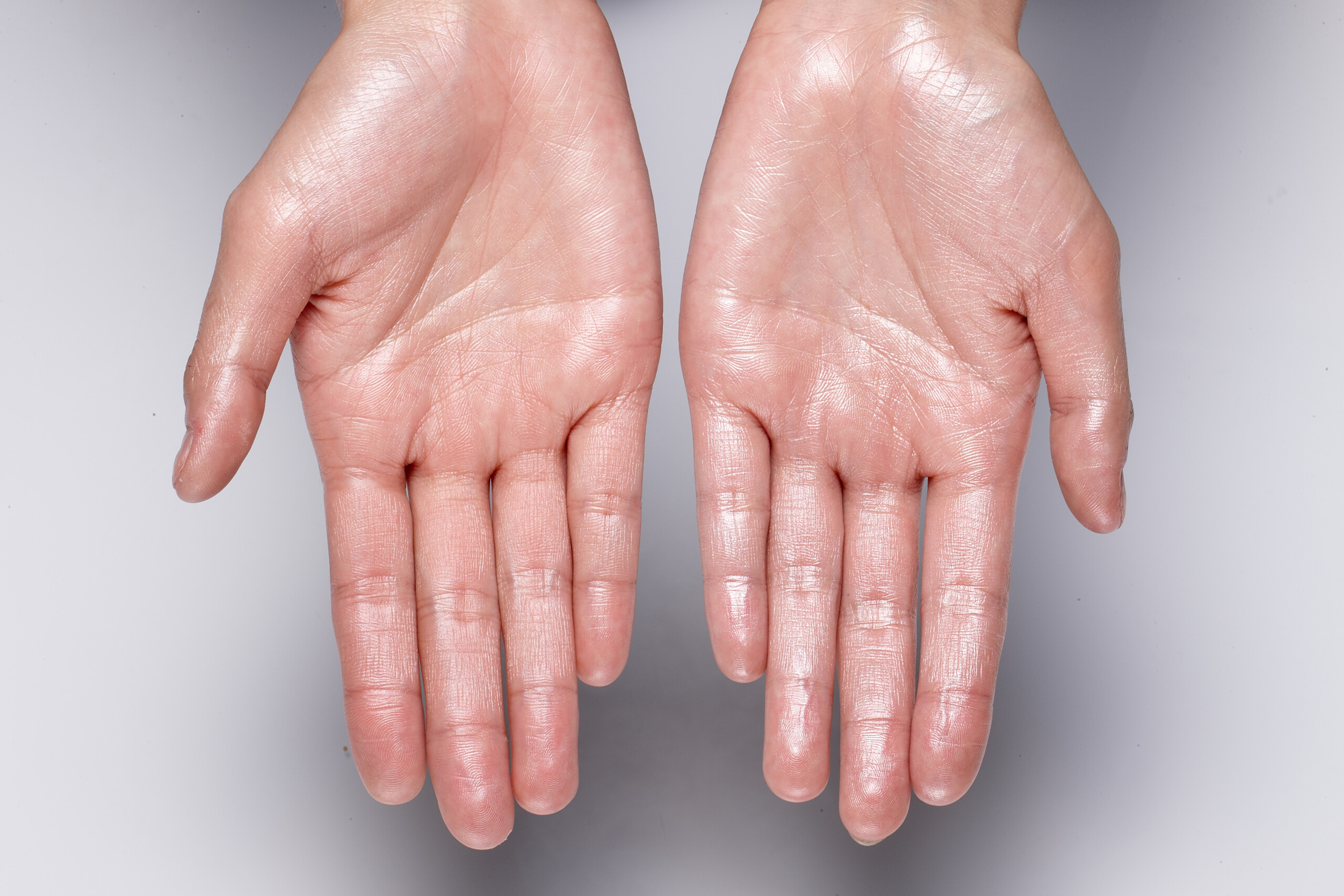Introducing the Complexities of Excessive Sweating: A Comprehensive Overview to Diagnosis and Monitoring
Too much sweating, clinically known as hyperhidrosis, is a problem that influences a significant number of individuals and can have an extensive effect on their quality of life. While sweating is an all-natural physical feature, its overactivity in hyperhidrosis presents a special collection of obstacles that commonly exceed plain pain. Recognizing the underlying reasons, acknowledging the signs and symptoms, and browsing the diagnostic process for hyperhidrosis can be intricate jobs. In this thorough guide, we will explore the complexities of hyperhidrosis, from its medical diagnosis to the range of therapy alternatives offered, dropping light on efficient monitoring approaches for those grappling with this condition.

Recognizing Hyperhidrosis Causes
Hyperhidrosis causes can be attributed to numerous factors such as genetics, hormone inequalities, and particular clinical conditions. Genetics play a significant role in primary focal hyperhidrosis, where people inherit the condition from their family participants. By recognizing the details factors contributing to too much sweating, medical care service providers can customize treatment plans to resolve the underlying cause, using alleviation and boosting the quality of life for individuals impacted by hyperhidrosis.
Acknowledging Hyperhidrosis Manifestations

Furthermore, hyperhidrosis signs and symptoms may show up in social and emotional distress, as people may feel embarrassed or anxious regarding their sweating, bring about evasion of social circumstances (Sweaty hands treatment). In addition, duplicated episodes of extreme sweating can result in skin maceration, fungal infections, and an overall decline in self-esteem
Diagnostic Process for Hyperhidrosis
Starting the diagnostic process for excessive sweating includes extensive assessment of the individual's medical background and health examination. Asking regarding the onset, duration, and causes of sweating episodes is critical to distinguish in between primary focal hyperhidrosis and second generalised hyperhidrosis. Case history must likewise consist of questions concerning medicines, clinical problems, and family members background of hyperhidrosis.
During the physical evaluation, specific focus is paid to the areas impacted by sweating. The doctor might examine the degree of sweating, look for signs of underlying problems, and assess the influence of sweating on the person's lifestyle. Additionally, certain examinations like the gravimetric examination, starch-iodine test, or skin conductance dimensions have a peek at this website may be carried out to evaluate the amount of sweat generated.
In addition, in cases where additional hyperhidrosis is thought, added examinations such as blood tests, pee tests, and imaging research studies may be recommended to recognize the underlying cause of extreme sweating. The diagnostic procedure aims to accurately determine the type and reason for hyperhidrosis to guide appropriate management techniques.
Therapy Choices for Hyperhidrosis
When resolving too much sweating, different therapy alternatives are offered to minimize signs and symptoms and improve the person's lifestyle. The treatment method for hyperhidrosis relies on the extent of symptoms and the individual's action to first treatments.
Topical therapies, such as aluminum-based antiperspirants, are frequently suggested as the first line of protection for managing Continue mild instances of hyperhidrosis. These items function by plugging the sweat air ducts, therefore decreasing the amount of sweat that reaches the skin's surface area. For individuals with a lot more severe signs and symptoms, dental drugs like anticholinergics may be recommended to aid lower sweating. These medicines can have side effects and are not ideal for everybody.
Effective Administration Strategies
To successfully take care of hyperhidrosis, a personalized and comprehensive treatment plan customized to the individual's specific requirements and feedback to previous treatments is essential. Iontophoresis, including the usage of a low electric existing to minimize sweat gland task, can be valuable for both palmoplantar and axillary hyperhidrosis. A multidisciplinary approach including skin doctors, main care physicians, and, if required, doctors, can enhance the management of hyperhidrosis.
Verdict
To conclude, hyperhidrosis is a problem defined by excessive sweating, which can greatly impact an individual's lifestyle. By recognizing the causes, recognizing the signs and This Site symptoms, and going through the diagnostic procedure, health care service providers can efficiently manage this problem. Treatment alternatives include topical medications, dental medications, shots, and even surgeries in severe situations. With appropriate medical diagnosis and monitoring methods, individuals dealing with hyperhidrosis can locate alleviation and boost their overall well-being.
Too much sweating, clinically recognized as hyperhidrosis, is a condition that affects a considerable number of individuals and can have a profound effect on their top quality of life. By identifying the specific elements contributing to extreme sweating, healthcare suppliers can tailor therapy plans to address the underlying reason, providing alleviation and enhancing the top quality of life for people affected by hyperhidrosis.
Hyperhidrosis, identified by too much sweating past what is essential for managing body temperature level, can considerably impact a person's top quality of life. Making inquiries about the onset, duration, and triggers of sweating episodes is important to distinguish in between main focal hyperhidrosis and second generalised hyperhidrosis. How to stop sweaty hands.In conclusion, hyperhidrosis is a condition characterized by too much sweating, which can substantially influence a person's high quality of life